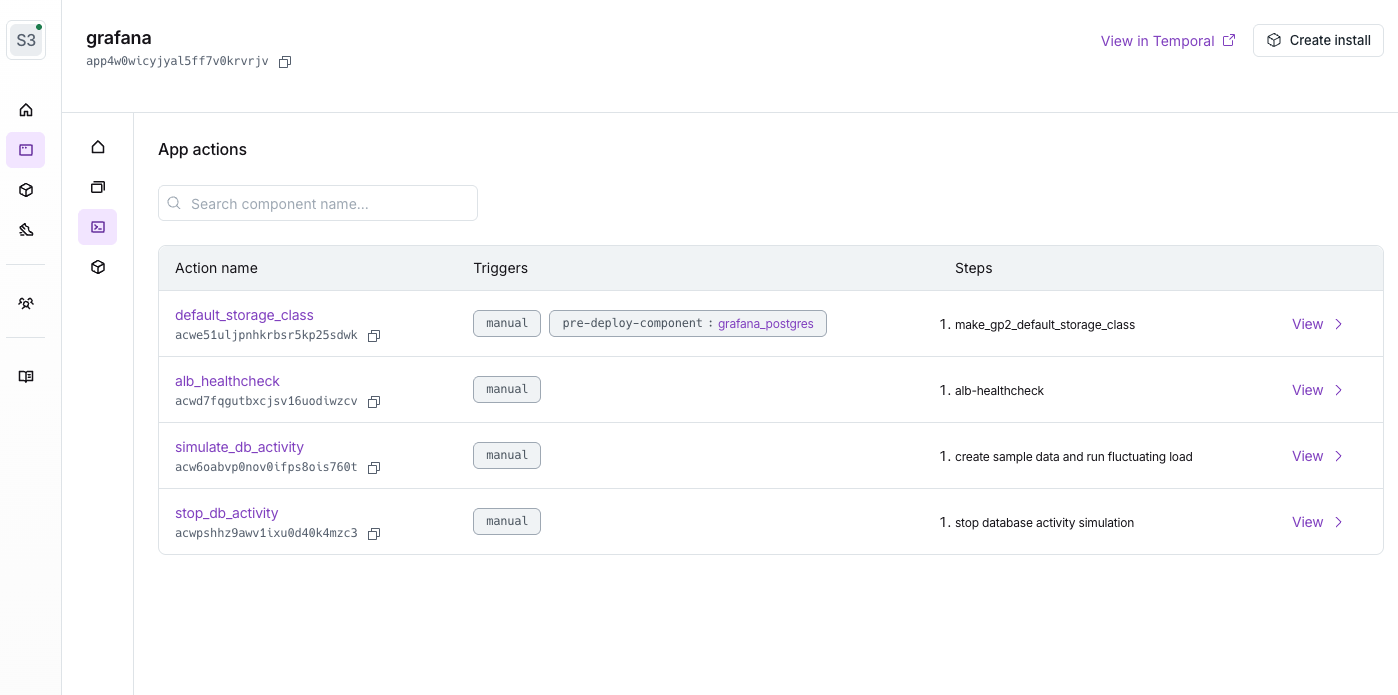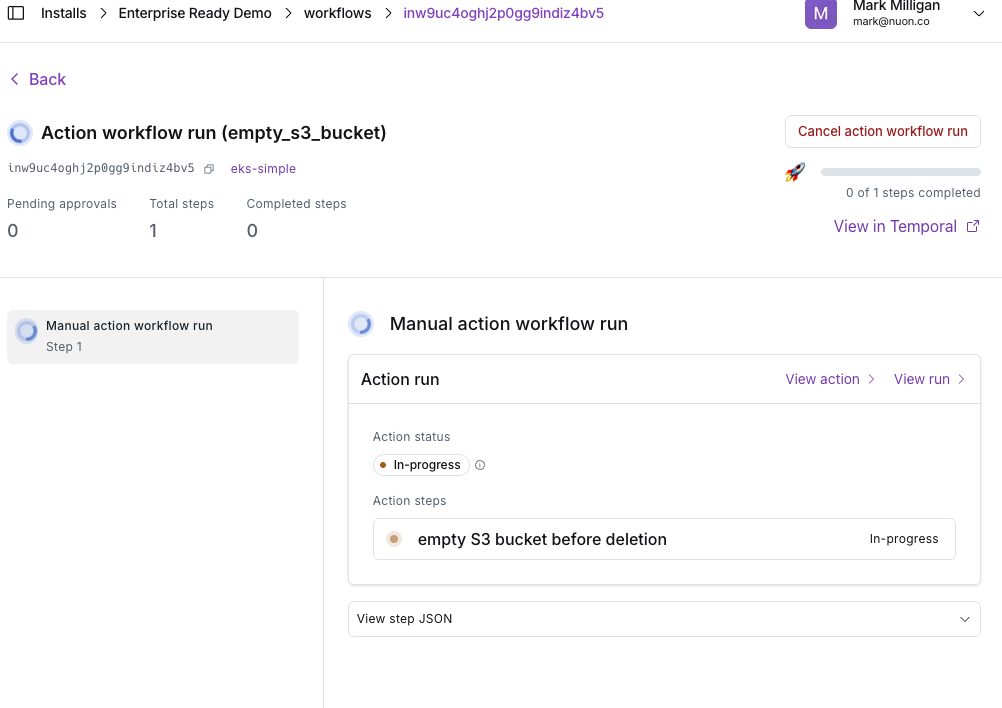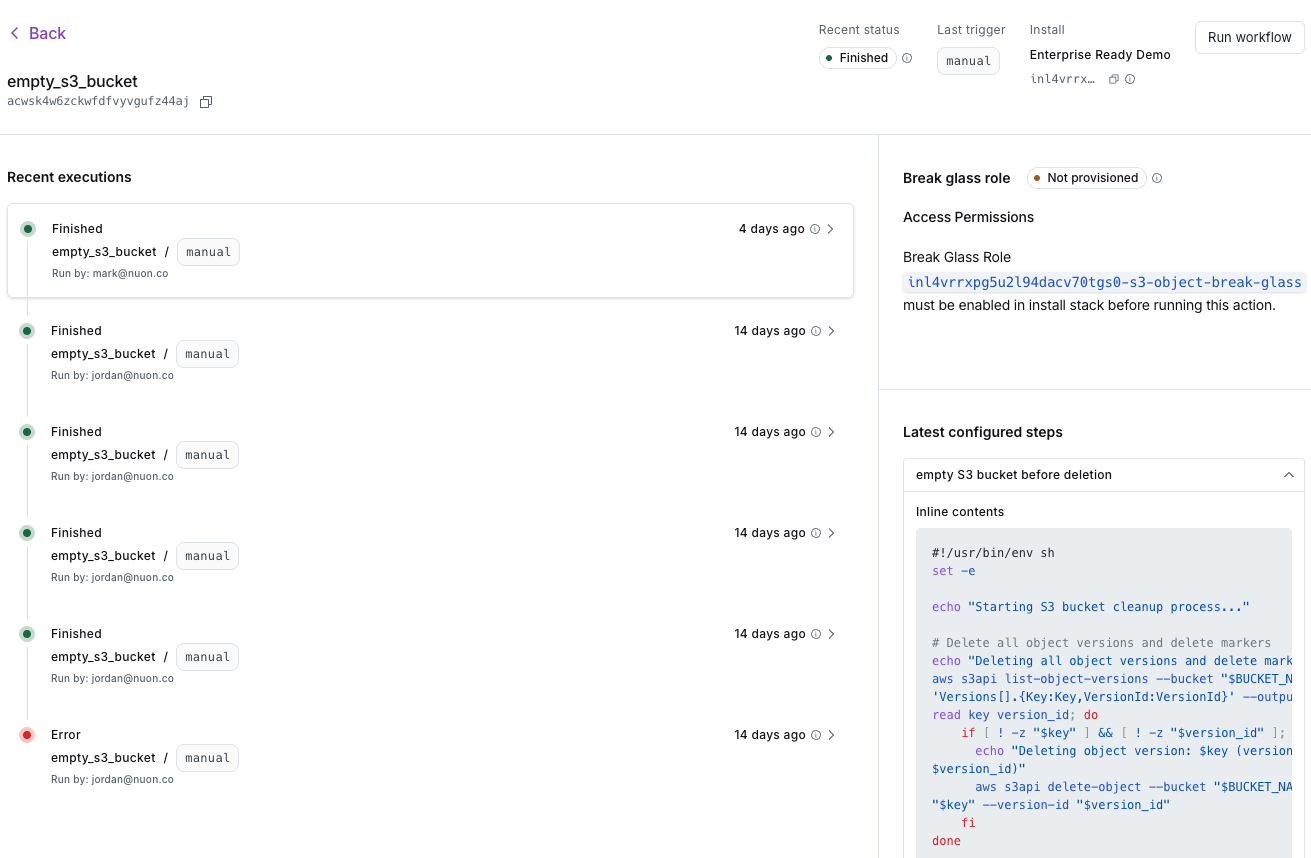What are Actions?
Actions are reusable workflows that can be configured to run on your installs. Each action consists of:- A trigger that determines when the action runs
- One or more steps that define what the action does
- Running database migrations
- Executing maintenance scripts
- Collecting diagnostic information
- Automating operational tasks
- Running custom health checks
How do you configure an Action?
Create anactions directory at the root of the app, and create a TOML file for
each action. e.g., alb_healthcheck.toml deployment_restart.toml
kubectl_logs.toml.
Actions along with components, the sandbox and app metadata are sent to the Nuon control plane with the CLI command nuon apps sync. If you change and add additional actions, you need to run nuon apps sync again to upload the changes. But unlike components, actions do not need to be built.

public_repo block) or a private GitHub repo (using a connected_repo block).
Read more about VCS configuration here.
For example, to pull logs from all Kubernetes pods in a namespace, you would
write an action like this:
actions/kubectl_logs.toml
actions/http_healthcheck.toml
We maintain a collection of commonly-used
actions in an open-source repo for you to
get started with.
Running Actions
Actions can be triggered in several ways:- Manually via the dashboard or CLI
- On a schedule
- In response to events

Action Triggers
Action triggers are now available for all workflows. You can now use the following set of triggers:pre-provisionpost-provisionpre-reprovisionpost-reprovisionpre-deprovisionpost-deprovisionpre-deploy-all-componentspost-deploy-all-componentspre-teardown-all-componentspost-teardown-all-componentspre-deprovision-sandboxpost-deprovision-sandboxpre-reprovision-sandboxpost-reprovision-sandboxpre-update-inputspost-update-inputspre-secrets-syncpost-secrets-sync
pre-provision or pre-reprovision that include a stack-run,
the trigger will be called right after the runner is healthy.
The following triggers require a component_name field to be set, as they are
tied to a specific component:
pre-deploy-componentpost-deploy-componentpost-teardown-componentpre-teardown-component
pre-component-deploy and post-component-deploy have been renamed to
pre-deploy-component and post-deploy-component for consistency with other
triggers. pre-sandbox-run and post-sandbox-run have been deprecated, in
favor of pre|post-reprovision, pre|post-provision, and
pre|post-deprovisionAction History
You can view the history of action runs using the dashboard: